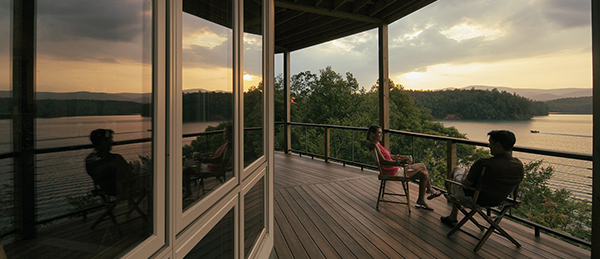Many people are familiar with Scandinavian design from the 1950s that celebrated clean, functional, and minimalist design. It has regained popularity recently and there are many modern interpretations of it.
Ikea is one of the most well-known examples for its simple and inexpensive furniture but many high-end furniture stores such as Hay or Design within Reach embrace the style as well.
However, Scandinavia has had a much bigger influence on modern living beyond its furniture. While many might not fully embrace the practice of leaving our babies out in the snow, there are several recently popular lifestyles that have gained popularity.
One you may have heard of hygge a Danish word that loosely translates to a quality of coziness and comfort that creates a feeling of contentment and well-being. Importantly, it is not an act but a state of being. That could be why it is so difficult to pin it down exactly.
It was born out of the need to be comfortable and enjoy the long Scandinavian winters together with an intimate group of friends or family. In a New Yorker article, Louisa Thomsen Brits, the author of “The Book of Hygge: The Danish Art of Contentment, Comfort, and Connection,” calls it “a practical way of creating sanctuary in the middle of very real life…”
It is about surrounding yourself with the small things that make life good such as warmth, light, seasonal foods and drinks within the atmosphere of laughter, friendship and security. It is about those mundane daily rituals like brewing coffee, lighting candles, and sitting by a fire that could be boring but instead become small moments to enjoy.
Clearly, your home plays a large part in creating this sanctuary. When designing your home, think about creating cozy book nooks, window seats, or more intimate spaces to enjoy. Perhaps design a semi-private informal space in which to escape in your floorplan. Incorporate a direct vent fireplace into a gathering space. You may want to include a hot drink station as part of your secondary kitchen or within your gathering areas. Consider storage to de-clutter your space.
When choosing fixtures and finishes, consider the importance of intimate lighting to create ambiance. Think about neutral color palettes and natural materials. Use textures to soften spaces. You may want to include a few nostalgic or memorabilia touches into your home.
While hygge is associated with the cold Scandinavian climate, hygge can work for warmer climates as well. Design outdoor spaces around fire pits or use a heat lamp over outdoor seating for chilly evenings. Build in those same nooks and gathering areas.
At the end of the day, the key to hygge is to make it work for you. What brings you or your intimate group those moments of serenity during the shortest days and most stressful times? What makes you savor those small moments letting you just enjoy that moment?
Should you be interested, you can also read about the concept of frilufstiv or the biophilic movement that can help inform how you think about hygge.
